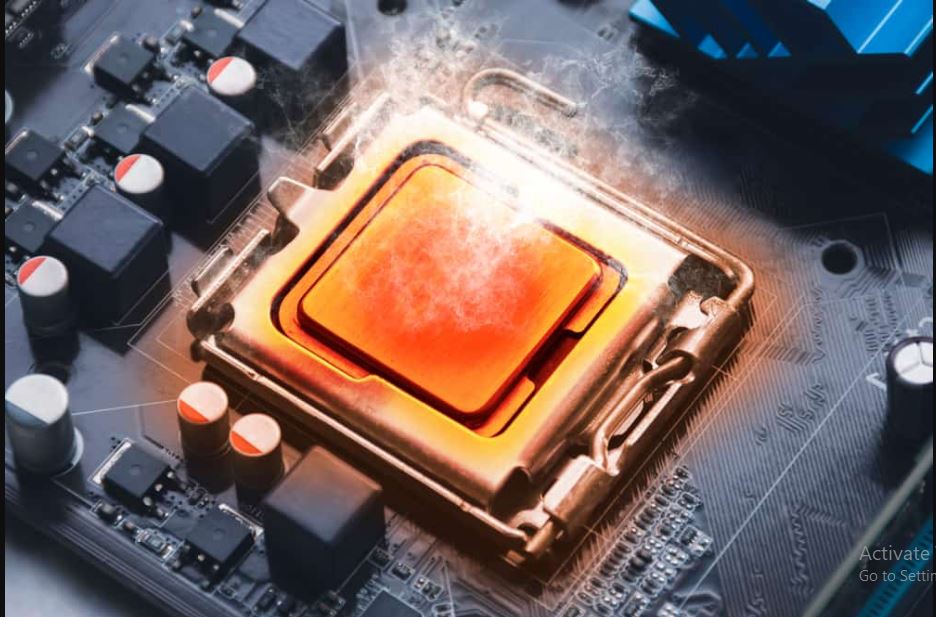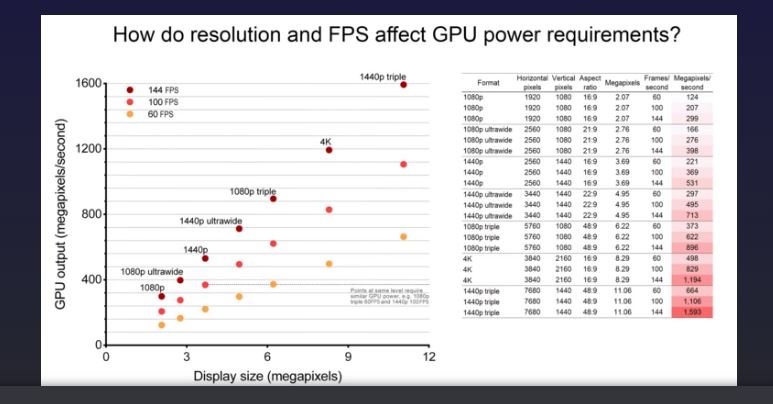In this ever-evolving digital world, two terms frequently dominate discussion among gamers and hardware enthusiasts: Resolution and FPS. These two terms play a huge role in your gaming experience. So, it is not unheard of to ask the question, Does resolution affect FPS?
Yes, resolution affects FPS, or frames per second. Higher resolutions demand more graphical processing power and often lead to lower fps. Oftentimes, gamers and graphic designers trade between resolution and fps to get their desired balance of visual quality and smooth gameplay.
Resolution and FPS tend to affect each other a lot. So, you are in the right place if you are a competitive gamer needing a higher resolution or FPS. This article will explain if resolution affects FPS, why, and how to increase it. Keep reading.
What Is FSP?
FPS stands for frames per second. It is a measurement unit that describes the number of individual frames or images displayed by a screen or graphics card in one second. It usually applies in the context of video games and other visual applications.
A higher FPS results in smoother and more fluid motion in your video games, while a lower FPS can lead to choppy and less responsive gameplay. It is safe to say that FPS determines the smoothness and fluidity of your gaming display. FPS is a crucial metric for assessing the performance and smoothness of video games and graphical-intensive applications.
A powerful graphics card can render more frames per second and provide smoother gameplay. So consider upgrading your GPU if you want a higher frame rate. You can also adjust your graphical settings to increase your frame rate per second. Choosing between resolution and frame per second is always a task, so what is the link between resolution and FPS?

What Is The Link Between Resolution And FPS?
The relationship between resolution and FPS is a performance and visual quality tradeoff. Higher resolutions can result in lower FPS due to increased graphical processing demands, while lower resolutions tend to yield higher FPS by reducing the workload on the graphics card.
The choice between resolution and FPS depends on individual preferences, gaming goals, and the capabilities of the gaming hardware. Here’s how resolution and FPS are interconnected:
Higher Resolution, Lower FPS:
- When you raise the resolution (e.g., from 1080p to 1440p or 4K), the number of pixels on the screen increases significantly. This means that the graphics card has to work harder to render more detailed images with a higher pixel count.
- Higher resolutions demand more graphical processing power, which can lead to a decrease in FPS. As you move to higher resolutions, you will usually experience lower FPS unless you have a very powerful graphics card.
Lower Resolution, Higher FPS
- Lowering the resolution decreases the number of pixels that need to be rendered. This lightens the load on the graphics card and allows it to produce frames more quickly.
- Lower resolutions generally result in higher FPS because the graphics card can generate frames more rapidly with fewer pixels to process.
Balancing Act
- Gamers often need to strike a balance between resolution and FPS based on their preferences and hardware capabilities. Some may prioritise higher resolutions for better visual quality, while others may opt for lower resolutions to achieve smoother gameplay.
- Many games offer customizable graphical settings, allowing players to adjust resolution and other graphical details to find the right compromise between visual fidelity and performance.
Monitor Compatibility
- To appreciate the benefits of a higher FPS fully, your monitor should have a refresh rate that matches or exceeds the FPS you want to achieve. For example, if you aim for 144 FPS, you’ll want a monitor with a 144 Hz refresh rate.
Competitive Gaming:
- In competitive gaming, especially in esports titles, players often prioritise higher FPS over higher resolutions. This is because a higher FPS can reduce input lag and provide smoother, more responsive gameplay, which is crucial in fast-paced games.
Read: How to lower resolution increase fps
Differences Between Resolution And FPS
Resolution and FPS (Frames Per Second) are two distinct but interconnected aspects. Here’s a table summarising the key differences between resolution and FPS:
| Aspect | Resolution | FPS (Frames Per Second) |
| Definition | Number of pixels displayed on screen | Number of frames displayed per second |
| Visual Quality | Higher resolution means sharper and more detailed graphics | Higher FPS results in smoother and more fluid motion |
| Impact on GPU | Increased resolution demands more graphical processing power, which can reduce FPS | Achieving higher FPS often requires a more powerful GPU to render frames quickly |
| Impact on CPU | Typically, the CPU’s role is minimal in affecting resolution | In some games, the CPU can influence FPS, especially in those with complex physics or AI calculations |
| Monitor Compatibility | Requires a matching or higher native resolution monitor to fully appreciate visual improvements | Requires a monitor with a refresh rate that matches or exceeds the desired FPS for smoother gameplay |
| Trade-offs | Increasing resolution may lower FPS due to increased GPU workload | Lowering resolution can boost FPS by reducing the GPU workload, creating a trade-off between visual quality and smoothness |
| User Preferences | Choice depends on visual preference; some prioritise image quality | Choice depends on the gaming experience; some prioritise smoother and more responsive gameplay |
Does Resolution Affect FPS?
Resolution can significantly affect FPS (Frames Per Second) in gaming and other graphics-intensive applications. The relationship between resolution and FPS is based on the processing power required to render images at higher resolutions. Here’s how resolution can affect FPS:
Higher Resolution, Lower FPS:
- Increasing the resolution, such as moving from 1080p (Full HD) to 1440p (2K) or 2160p (4K), means there are more pixels to render on the screen.
- More pixels demand more computational power from the graphics card (GPU) because it needs to calculate and render each pixel’s colour and position accurately.
- As a result, higher resolutions tend to lower FPS because the GPU is working harder to produce more detailed and higher-resolution images in the same amount of time.
Lower Resolution, Higher FPS:
- Conversely, reducing the resolution decreases the number of pixels that need to be processed and rendered on the screen.
- Lower resolutions place less strain on the GPU, allowing it to render frames more quickly and efficiently.
- This usually leads to higher FPS because the GPU can produce more frames per second at lower resolutions.
Balancing Act:
- Gamers often have to trade between resolution and FPS based on their hardware capabilities and personal preferences.
- Many games offer customizable graphical settings. This allows players to adjust resolution and other graphical details to balance visual fidelity and performance.
Monitor Compatibility:
- To fully experience the benefits of a higher FPS, your monitor should have a refresh rate that matches or exceeds your desired FPS. For example, if you aim for 144 FPS, a 144 Hz monitor is ideal.
The resolution affects FPS, but the relationship is usually a trade-off. Higher resolutions require more GPU power, which can result in lower FPS, while lower resolutions demand less GPU power and typically lead to higher FPS. The choice between resolution and FPS depends on your preferences and the capabilities of your gaming hardware.

How Do I Increase My FPS?
You can take several steps to increase your frame rate and optimise your gaming setup. Here are some ways to increase your FPS:
Adjust In-Game Settings:
- Reduce graphical settings in the game, such as texture quality, shadows, anti-aliasing, and post-processing effects. Lowering these settings can significantly improve FPS.
- Consider lowering your screen resolution. Playing at a lower resolution reduces the number of pixels your GPU needs to render, resulting in higher FPS.
- Some games allow you to adjust the render scale separately from your screen resolution. Lowering the render scale can improve performance while maintaining the same screen resolution.
Update Graphics Drivers:
- Ensure your graphics card drivers are up-to-date. Manufacturers frequently release driver updates that can improve game performance.
Overclock Your GPU:
- If you’re comfortable with it and have adequate cooling, overclocking your graphics card can provide a noticeable FPS boost. Be cautious and follow proper overclocking guidelines to avoid overheating or damaging your hardware.
Adjust Windows Settings:
- Set your computer’s power plan to “High Performance” to ensure that your CPU and GPU are running at maximum capacity during gaming.
- Close unnecessary background applications and processes to free up system resources for gaming.
Keep Your System Cool:
- Ensure your PC is adequately cooled. Overheating can lead to throttling, which reduces performance. Clean dust from your system, ensure good airflow, and consider additional cooling solutions if necessary.
Use Game Optimisation Tools:
- Some games have built-in optimisation tools or launch options that can improve performance. Check the game’s settings or documentation for any available options.
Upgrade Hardware:
- If your current GPU is outdated and can’t handle modern games, consider upgrading to a more powerful graphics card.
- Upgrades to a faster CPU or processor can help improve FPS.
- Ensure you have enough RAM for the games you play. Running out of memory can cause performance issues. Upgrade to faster RAM if your motherboard supports it.
Monitor Refresh Rate:
- Ensure your monitor’s refresh rate matches or exceeds the FPS you want to achieve. Using a high-refresh-rate monitor can make a noticeable difference in the smoothness of your gameplay.
Optimise Game-specific Settings:
- Check the specific settings for each game. Some games may have unique settings that can impact performance. Adjust them accordingly.
Use External Optimisation Software:
- Some third-party software tools, like NVIDIA GeForce Experience or AMD Radeon Software, offer optimisation features that can automatically adjust in-game settings for better performance.
The effectiveness of these methods can vary depending on your specific hardware and the games you play. Experiment with different settings and configurations to find the best balance between visual quality and FPS for your gaming experience.
Frequently Asked Questions
Can I Increase My Fps Without Upgrading My Hardware?
Yes, you can improve FPS without upgrading your hardware. You can do this by optimising in-game settings, updating graphics drivers, and adjusting Windows settings. Reducing graphical settings, in particular, can provide a noticeable boost in performance.
How Do I Know Which Settings To Adjust For The Best Fps Improvement In A Specific Game?
Finding the optimal settings can vary from game to game. Start by adjusting settings like texture quality, shadows, and anti-aliasing to lower values. You can also search online for recommended settings for your specific game, as many gaming communities and websites provide optimisation guides.
Should I Prioritise Higher FPs or Better Graphics Quality In Gaming?
The choice between FPS and graphics quality depends on your preferences and the types of games you play. Competitive gamers often prioritise higher FPS for smoother and more responsive gameplay. If you enjoy visually stunning single-player games, you may opt for better graphics quality.
Conclusion
The relationship between resolution and fps is very important to your gaming experience. Resolution affects the visuals and details of your game, while fps influences the responsiveness and smoothness of the gameplay.
These two have a sort of connection where they both affect each other. If you need a higher fps rate, then your resolution will be lower, and vice versa. This article has explained everything about how resolution affects FPS. Now, you can’t say you don’t know.
